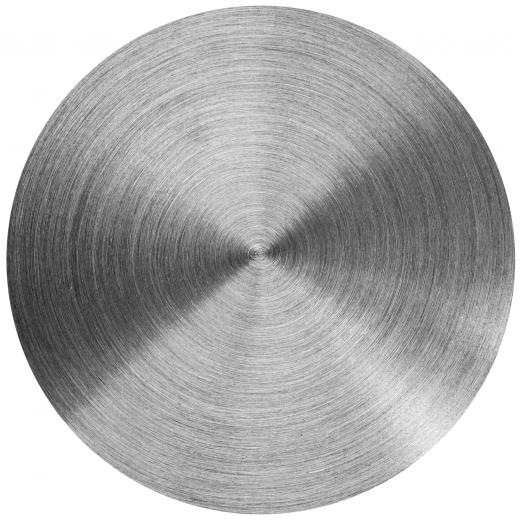The hardness of carbon steel can be affected by a number of different factors, including the carbon contact, the amount and type of other elements in the alloy, and the specific processes used to create the steel. Low carbon steel, which contains between 0.05 and 0.25% carbon, is typically the softest variety, though it can be hardened through a process known as carburizing. Ultra-high carbon steel, which can consist of up to 2% carbon, is typically the hardest type, though the final hardness of each product is also determined by various heat treatment processes. Quenching processes can increase the hardness of carbon steel by a factor of about four, though subsequent tempering typically lowers the hardness.
Carbon steel is an alloy that consists primarily of iron and carbon. Other elements may be present as well, typically in very small amounts. There are a few different definitions of what exactly constitutes carbon steel, though elements such as silicon and copper typically account for less than 0.6% of various alloys. Some carbon steel alloys can also have up to 1.6% of elements such as manganese. Since there are a number of different alloys that are all commonly referred to as carbon steel, each type tends to have a different hardness.

The primary factor that affects the hardness of carbon steel is the amount of carbon present in the alloy. Low carbon steels tend to be the softest, while ultra-high carbon steels can be quite hard and brittle. It is also possible to change the physical characteristics of carbon steel through various treatments, either to increase or reduce the hardness.

Even though low carbon steel is relatively soft, a process known as carburization can cause it to become harder. This heat treatment process actually causes the alloy to absorb additional carbon from solid, liquid, and gaseous sources such as charcoal and carbon monoxide. The carbon is typically only absorbed into the surface of the metal, which results in a case hardened outer layer and a softer, ductile core.
High content carbon steels tend to be very hard to begin with, but quenching processes can make them even harder. If a carbon steel alloy is too hard though, it will typically also be quite brittle. Some exceptionally hard alloys are actually subjected to quenching and tempering processes that can reduce the hardness of carbon steel, and increase ductility. Other processes, such as annealing, can also effectively increase the ductility and decrease the overall hardness of the steel.
